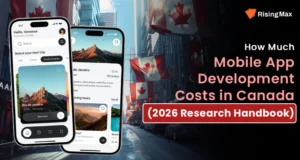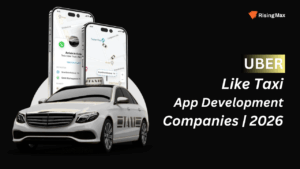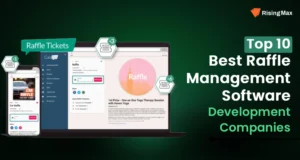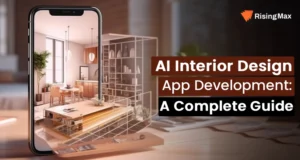As fashion intrinsically oscillates with trends, it keeps up with what’s hot and what’s not! AI inoculation, as an invaluable tool, is successfully revolutionizing how brands anticipate and exploit fashion updates.
The AI in the fashion market is expected to reach US$ 4,391.7 million, increasing at a CAGR of 38.20%.

AI can evaluate tremendous amounts of data from different sources, such as online retail sites, fashion blogs, global fashion events, and social media platforms. Its predicting capability helps businesses analyze numerous elements, including trending fabrics, regional fashion preferences, and audience styling choices. In doing so, AI spots patterns and foretells trends with accuracy.
What else is AI bringing to the fashion industry? Explore the innovative intersection of fashion and AI in this blog. Learn about the presence of AI in fashion trend prediction, supplychain optimization, and customer experience. Discover how AI technologies play a pivotal role in the fashion industry with real-life examples.
Role of AI in the Fashion World
The fusion of fashion and AI is quickly emerging as the greatest transformative force till now. Generative AI could add $150 billion conservatively and up to $275 billion to the operating profits of the fashion, luxury, and apparel sectors. These figures add value to business growth. AI’s potential to alter the fashion terrain is varied and substantial, from enabling virtual try-ons and predicting trends to customizing the shopping experience and optimizing supplychains.
AI residing in the fashion field is reshaping it in better ways. Have a look-
Fashion Market Prediction
AI has made a big debut in the fashion industry. Holding umpteen use cases for the future of fashion, AI has eyes on what’s happening online, helping itself to make predictions. The internet is a hub of millions of photos. These images communicate much better than what an individual is wearing. With the help of those visuals, AI pulls out the predictions related to subcultures, weather, activities, cosmetics, and more. AI algorithms analyze these photos to predict upcoming trends.
For instance, the Amazon-backed AI tool GeoStyle sets out to predict the future of fashion trends. Considering the effect of weather, societal events, and location, it aims to recognize fashion trends across 37 cities globally and decode the communicating language. Its process automatically segments the map into vicinities with a similar fashion sense. This approach allows for discovering insights about a region.
The tool clusters images of similar styles from similar regions identifies neighbourhood-specific trends, and outlines inferences on relationships between dress styles across certain cities.
SupplyChain Optimization
AI has a huge impact on optimizing supplychain management processes. AI models store and evaluate historical data to understand the stock lifestyle and bring efficacy to inventory management. With predictive information by AI, fashion businesses can enhance their sales and inventory levels – by creating informed decisions about when to stock, when, and to whom.
For instance, a global supplychain manager, Li & Fung, uses AI to connect retailers with suppliers in real time by developing a digital supplychain platform. It makes the supplychain responsive and efficient.
Further, H&M, with AI, analyzes store receipts and returns that help them adjust the quantities of each garment for every store. This type of data analysis prevents increasing unsold stock and cutting costs.
Shopping Experience Customization
Personalization has become a robust tool for retailers in the eCommerce sector. And irrefutably, AI is at the forefront of this event. AI helps fashion brands personalize the shopping experience, providing shoppers with personalized recommendations based on their preferences, purchasing history, and behavior.
For example, Amazon uses AI to provide product recommendations, helping customers discover new items that match their needs and styles. This personalization enhances customer satisfaction and increases sales, as they will likely purchase items tailored to their preferences.
Transform your fashion business today with RisingMax!
Experience the power of AI and revolutionize the way you do business. Don’t miss out – launch your AI project with RisingMax now!
AI Technologies Implemented in the Fashion Industry
The fashion industry has come so far in exhibiting its creativity in forming stylish looks and in technologies that make it unique in designing customer experiences. Below is a detailed brief of the AI technologies utilized in the fashion sector:
Machine Learning (ML): The first widespread use in retail was in the early 2000s. The pioneers Netflix and Amazon started using ML algorithms to personalize their product recommendations for prospects. Now, the fashion sector uses ML algorithms to identify patterns and objects within pictures, making it helpful for customers to recognize apparel styles, colors, and phony items.
Natural Language Processing (NLP): It helps fashion companies understand customer reviews, feedback, and social media sentiment. NLP helps improve product descriptions, virtual assistants, and AI-powered chatbots.
Computer Vision: This technology allows users to search by uploading or taking pictures of fashion products. Also, computer vision powers (AR) and (VR) applications evaluate that allow customers to try accessories and clothing before buying them.
Generative AI: Includes the Generative Adversarial Networks (GANs) technique, which consists of two neural networks: a discriminator and a generator. Generative AI talks about style transfer, experimenting with fashion design by using one style in another fashion item.
Deep Learning: It empowers fashion businesses to analyze vast datasets, such as influencer activities and social media posts, to anticipate emerging fashion trends. Analyzing trends and patterns in clothing colors, styles, and design components is possible when deep-learning and neural network models process and apprehend complex data.
Real-life Examples of AI in Fashion
The duo of AI and fashion is winning hearts. AI technology can increase profitability rates by 59% in the fashion retail industry by 2035. Many companies have started opting for it while some are already availing of its benefits. Know about those businesses here:
Nike: Nike, based in Beaverton, launched the Nike Fit app that allows consumers to scan their feet with a smartphone camera to get the perfect sizing. Many people have tried it, as AI technology uses a 13-point measuring system to measure the foot’s dimensions. It resulted in providing the right fit for users, lowering returns, and increasing profit margins.
Tommy Hilfiger: This brand uses AI to provide personalized suggestions to customers, enhance sustainability practices, monitor inventory, boost the shopping experience, and produce design ideas. Moreover, the company in New York uses ML algorithms to evaluate customers’ preferences and fashion trends.
Adidas: Using the AI-based strategy, Adidas increased its shipping and supply chain procedures in Portland. Adidas leverages AI technology to attain high levels of personalization, engagement, and automated customer service. The company employs the technology to create avatars to promote products, develop 3D designs, and generate digital apparel.
Bruceglen and Laura Garcia: Both emerging brands displayed pieces produced by Resonance, a manufacturing company using proprietary AI and automated cutting machines to make individual clothing items after purchasing them during New York Fashion Week.
Wrapping Up!
AI redefines the fashion sector by enhancing operational efficiency, improving customer experiences, and encouraging sustainability. The role of AI in shopping experiences, supply chain management, and predictive analytics illustrates how AI unlocks new possibilities. The real-life examples of AI in fashion have delivered exceptional value to the target audience.
Ready to implement AI technologies into your fashion businesses? The AI development maestros of Rising Max are ready to help you take your business to the virtual landscape. Contact us today!












